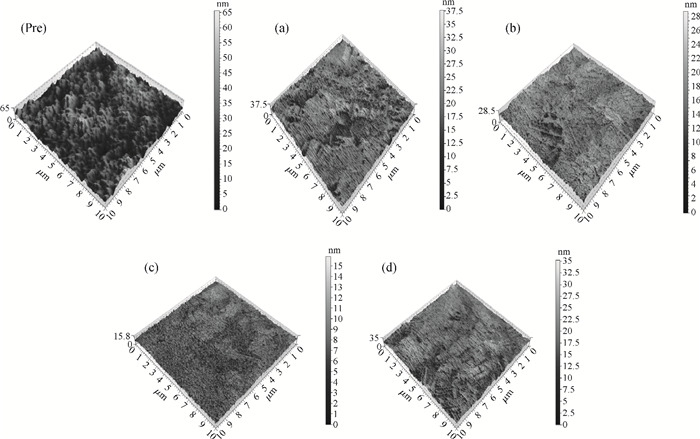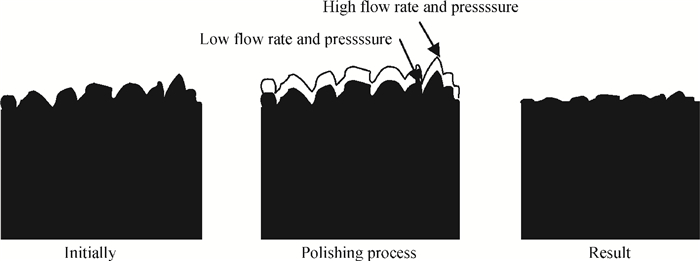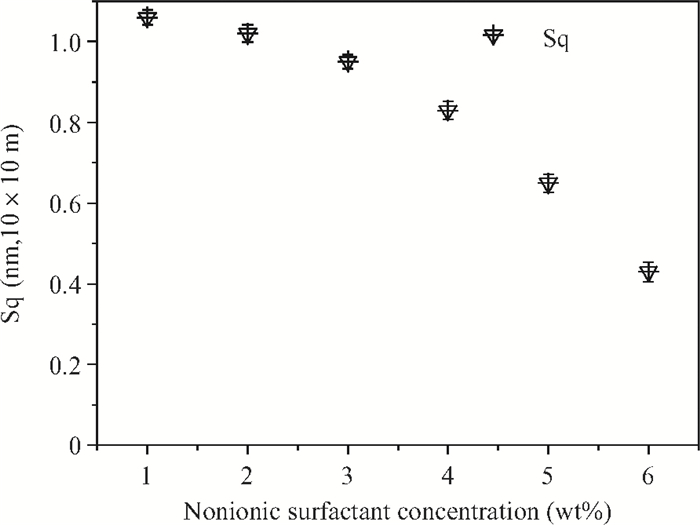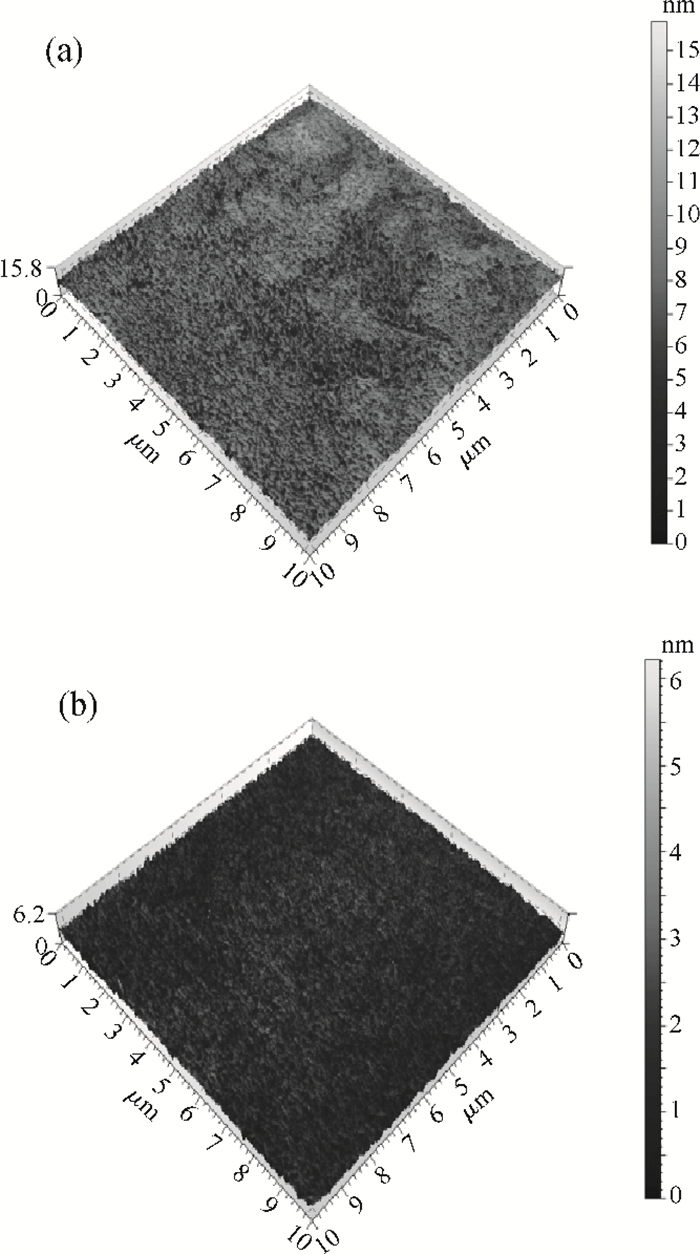| Citation: |
Jiaojiao Gao, Yuling Liu, Chenwei Wang, Jin Cui. Mechanism analysis of the affect the copper line surface roughness after FA/O alkaline barrier CMP[J]. Journal of Semiconductors, 2014, 35(12): 126003. doi: 10.1088/1674-4926/35/12/126003
****
J J Gao, Y L Liu, C W Wang, J Cui. Mechanism analysis of the affect the copper line surface roughness after FA/O alkaline barrier CMP[J]. J. Semicond., 2014, 35(12): 126003. doi: 10.1088/1674-4926/35/12/126003.
|
Mechanism analysis of the affect the copper line surface roughness after FA/O alkaline barrier CMP
DOI: 10.1088/1674-4926/35/12/126003
More Information
-
Abstract
The surface roughness seriously affects the performance of devices after barrier CMP. Due to the high surface roughness of copper line, the local resistance of a device will be high when working, then the copper line will overheat prompting the generation of electro-migration and the circuit will lose efficacy. Reducing the surface roughness of the copper line in barrier CMP is still an important research topic. The main factors influencing the surface roughness of copper line in alkaline barrier slurry are analyzed in the paper. Aimed at influencing the law on the surface roughness of copper line, using a new type of alkaline barrier slurry with a different pH of the chelating agent and changing the content of non-ionic surfactant, we then analyze the influencing law both on the surface roughness of copper line, and the influence mechanism. The experimental results show that with a chelating agent with a low pH value in the barrier slurry, the surface roughness of the copper line is 1.03 nm and it is the lowest in all of the barrier slurries, and with the increase of non-ionic surfactant concentration, the surface roughness of copper line is reduced to 0.43 nm, meeting the demand of further development of integrated circuits. -
References
[1] Chen Su, Zhang Kailiang, Song Zhitang. Advances in chemical mechanical polishing of copper in mutilevel interconnect. Semicond Technol, 2005, 30(8):21[2] Liu Yuling, Li Weiwei, Zhou Jianwei, et al. Microelectronics chemical technology foundation. Beijing: Chemical Industry Press, 2005[3] Liu Yuling, Tan Bomei, Zhang Kailiang, et al. Microelectronics technology engineering-materials, technology and testing. Beijing: Electronic Industry Press, 2004[4] Chen J C, Tsai W T. Effects of hydrogen peroxide and alumina on surface characteristics of copper chemical-mechanical polishing in citric acid slurries. Mater Chem Phys, 2004, 87:387 doi: 10.1016/j.matchemphys.2004.06.007[5] Hu Yi, Liu Yuling, Liu Xiaoyan. Effect of copper slurry on polishing characteristics. Journal of Semiconductors, 2011, 32(11):116001 doi: 10.1088/1674-4926/32/11/116001[6] Su Yanqin, Liu Yuling, Liu Xiaoyan, et al. Analysis and research on the surface roughness of the copper multilayer interconnection CMP in ULSI. Semicond Technol, 2009, 34(8):730 http://en.cnki.com.cn/Article_en/CJFDTotal-BDTJ200908007.htm[7] Tang Xinliang, Liu Yuling, Wang Chenwei, et al. Investigation on the removal rate and planarization properties of an alkaline slurry for Cu CMP. Function Mater, 2012, 20(43):2804[8] Saka N, Eusner T, Chun J H. Nano-scale scratching in chemical mechanical polishing. CIRP Annals-Manufacturing Technology, 2008, 57(1):341 doi: 10.1016/j.cirp.2008.03.098[9] Zheng Weiyan, Liu Yuling, Wang Chenwei, et al. Study of planarization efficiency of an alkaline copper slurry on 300 mm pattern wafer CMP. Function Mater, 2012, 24(43):3472 http://en.cnki.com.cn/Article_en/CJFDTotal-GNCL201224034.htm[10] Nguyen V H, Roel D, Romano H. Impact of different slurry and polishing pad choices on the planarization efficiency of a copper CMP process. Microelectron Eng, 2004, 76:95 doi: 10.1016/j.mee.2004.07.019[11] Christopher M S, Dipankar R. Electrochemical characterization of surface complexes formed on Cu and Ta insuccinic acid based solutions used for chemical mechanical planarization. Appl Surf Sci, 2012, 256:2583 doi: 10.1007/s10008-010-1164-z[12] Mahadevaiyer K, Jakub W, Lee M. Chemical mechanical planarization:slurry chemistry, materials and mechanisms. Chem Rev, 2010, 110(1):179 doi: 10.1021/cr900170z[13] Nguyen V H, Hof A, Van Kranenburg H, et al. Copper chemical mechanical polishing using a slurry-free technique. Microelectron Eng, 2001, 55(3):305 https://www.narcis.nl/publication/RecordID/oai%3Aris.utwente.nl%3Apublications%2F6334dbde-2706-4ba0-92c6-b4a163fedcc7 -
Proportional views





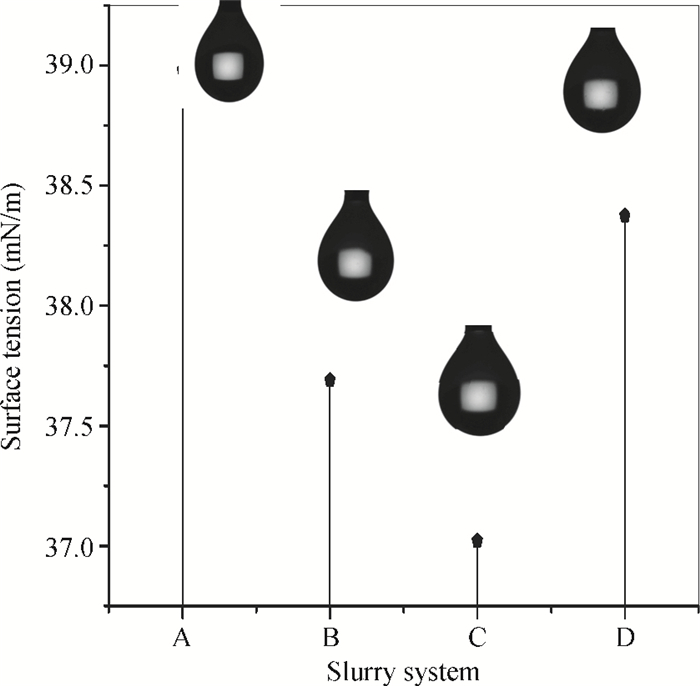
 DownLoad:
DownLoad:
